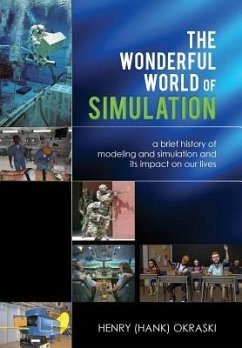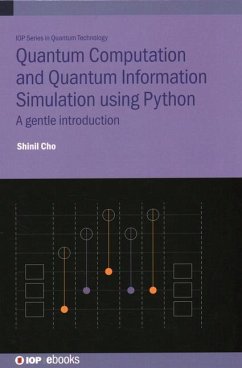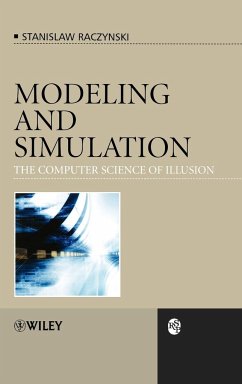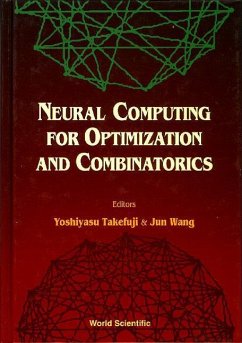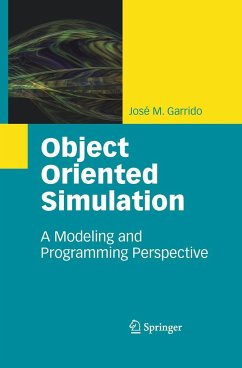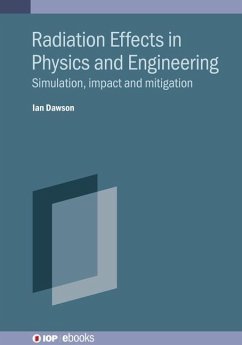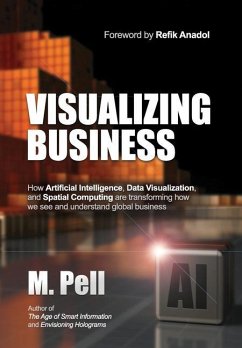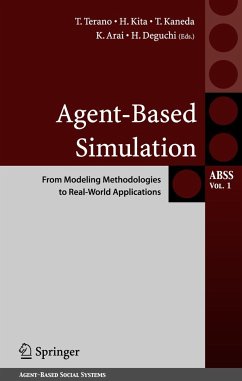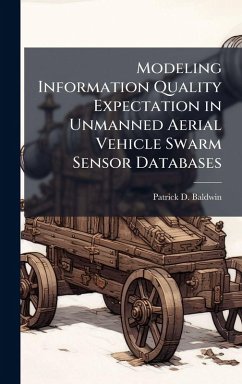
Agent Based Simulation Seas Evaluation of DoDAF Architecture
Versandkostenfrei!
Versandfertig in über 4 Wochen
27,99 €
inkl. MwSt.
Weitere Ausgaben:

PAYBACK Punkte
14 °P sammeln!
With Department of Defense (DoD) weapon systems being deeply rooted in the command, control, communications, computers, intelligence, surveillance, and reconnaissance (C4ISR) structure, it is necessary for combat models to capture C4ISR effects in order to properly assess military worth. Unlike many DoD legacy combat models, the agent based model System Effectiveness and Analysis Simulation (SEAS) is identified as having C4ISR analysis capabilities. In lieu of requirements for all new DoD C4ISR weapon systems to be placed within a DoD Architectural Framework (DoDAF), investigation of means to ...
With Department of Defense (DoD) weapon systems being deeply rooted in the command, control, communications, computers, intelligence, surveillance, and reconnaissance (C4ISR) structure, it is necessary for combat models to capture C4ISR effects in order to properly assess military worth. Unlike many DoD legacy combat models, the agent based model System Effectiveness and Analysis Simulation (SEAS) is identified as having C4ISR analysis capabilities. In lieu of requirements for all new DoD C4ISR weapon systems to be placed within a DoD Architectural Framework (DoDAF), investigation of means to export data from the Framework to the combat model SEAS began. Through operational, system, and technical views, the DoDAF provides a consistent format for new weapon systems to be compared and evaluated. Little research has been conducted to show how to create an executable model of an actual DoD weapon system described by the DoDAF. In collaboration with Systems Engineering masters student Captain Andrew Zinn, this research identified the Aerospace Operation Center (AOC) weapon system architecture, provided by the MITRE Corp., as suitable for translation into SEAS. The collaborative efforts lead to the identification and translation of architectural data products to represent the Time Critical Targeting (TCT) activities of the AOC. A comparison of the AOC weapon system employing these TCT activities with an AOC without TCT capabilities is accomplished within a Kosovo-like engagement (provided by Space and Missile Center Transformations Directorate). Results show statistically significant differences in measures of effectiveness (MOEs) chosen to compare the systems. The comparison also identified the importance of data products not available in this incomplete architecture and makes recommendations for SEAS to be more receptive to DoDAF data products. This work has been selected by scholars as being culturally important, and is part of the knowledge base of civilization as we know it. This work was reproduced from the original artifact, and remains as true to the original work as possible. Therefore, you will see the original copyright references, library stamps (as most of these works have been housed in our most important libraries around the world), and other notations in the work. This work is in the public domain in the United States of America, and possibly other nations. Within the United States, you may freely copy and distribute this work, as no entity (individual or corporate) has a copyright on the body of the work. As a reproduction of a historical artifact, this work may contain missing or blurred pages, poor pictures, errant marks, etc. Scholars believe, and we concur, that this work is important enough to be preserved, reproduced, and made generally available to the public. We appreciate your support of the preservation process, and thank you for being an important part of keeping this knowledge alive and relevant.




